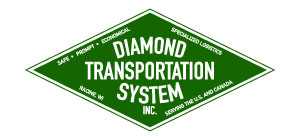How to Load Heavy Equipment on a Trailer
In the trucking industry, the main prospect is in transporting freight using professional equipment. Considering that freight hauls are paid according to weight and mileage, there are benefits to hauling heavy loads.
However, you also need the right equipment, such as heavy-duty trailers, as well as learn how to safely load this type of freight. Start with this instructive guide–or simply hire the experts at Osage Specialized Transport to handle your heavy cargo.
About Transporting Divisible Heavy Loads
When transporting freight, a divisible load that cannot be hauled oversize has to be broken down to support heavy hauling limits. The load is by definition divisible, in comparison to a non-divisible load that cannot be divided for transport.
These limits include weight, height, and length. The state and local departments of transportation are responsible for managing the total freight limits. If you are interested in hauling heavy equipment, you must follow these guidelines to load heavy equipment on a trailer.
Prepping Heavy Equipment Trailers
When dealing with a heavy haul, start with the specifications of how long, wide, and heavy it truly is–every inch and pound counts. Chock the wheels of the trailer and use a leveling tool to determine that your trailer is sitting level with the ground.
This will help you balance the freight more evenly. If you are working with divisible freight, you can break down the haul as needed to use more than one truck to minimize risks involved with oversized loads.
Size Limits for Normal Size Hauls
A normal size load cannot exceed 8.5 feet in width and 102 inches in height, as well as 80,000 pounds gross vehicle weight. This includes the size of the truck and trailer. Anything that exceeds this size limit, even by half an inch, is considered an oversized load.
Therefore, you will have to follow requirements set forth by the Department of Transportation (DOT) for hauling oversized cargo. This varies from standard freight hauls due to the size and capacity of the load on the trailer and truck. If the truck and trailer are not able to safely transport the oversized load, this puts the public at risk for highway safety.
About Oversized Load Permits
If you are working with oversized freight, you may be required to get an oversized load permit. This is an official document received from a local transportation authority or city department. In addition, the freight may require the use of a pilot car.
This is a specialized passenger car driven by someone solely for the use of escorting oversized freight. For example, in California, all oversized loads greater than 12 feet in width require the use of a pilot car.
How to Move a Heavy Load
The final consideration when transporting heavy hauls is getting the freight onto the trailer. In some instances, shipping customers have hauls so large that only a crane can do the job of moving them. Cranes are very expensive and require booking an appointment with a crane operator.
However, most often, forklifts are used to transport hauls–even oversized cargo that is divisible. You may have to hire a lumper, which is the type of person working in docks and responsible for getting freight off of trailers. Often, companies have lumpers who are hired secondly by the drivers themselves, as they need them at the loading dock.
How to Access Heavy-Duty Trailers
The easiest–and safest–way to successfully haul heavy freight is with specialized transport services. At Osage Specialized Transport, we offer the most affordable shipping rates and the best freight transport capacity.
Whether you have a one-off oversized load, or you are starting a new trucking department for your company, we want to work with you. Contact us today for a quote on heavy equipment hauling. We have a trailer for heavy equipment for most types of oversized freight.
Reader interactions
One Reply to “How to Load Heavy Equipment on a Trailer”
Comments are closed.
















[…] of Logistics and Transportation – Whatever expensive machinery is being moved, it’s critical to keep track of its […]